Additional data:
See how quickly patients experienced
results with CABTREO
Reduction in inflammatory lesions
- Two Phase 3 studies show a mean reduction in inflammatory lesions with CABTREO of 54% vs 40% with vehicle at Week 4.1
- Lesion reductions were greater with CABTREO vs vehicle gel as early as Week 4.1
- The safety and efficacy of CABTREO were evaluated in two multicenter, randomized, double-blind clinical trials.
MEAN PERCENT REDUCTION IN INFLAMMATORY LESIONS at week 121
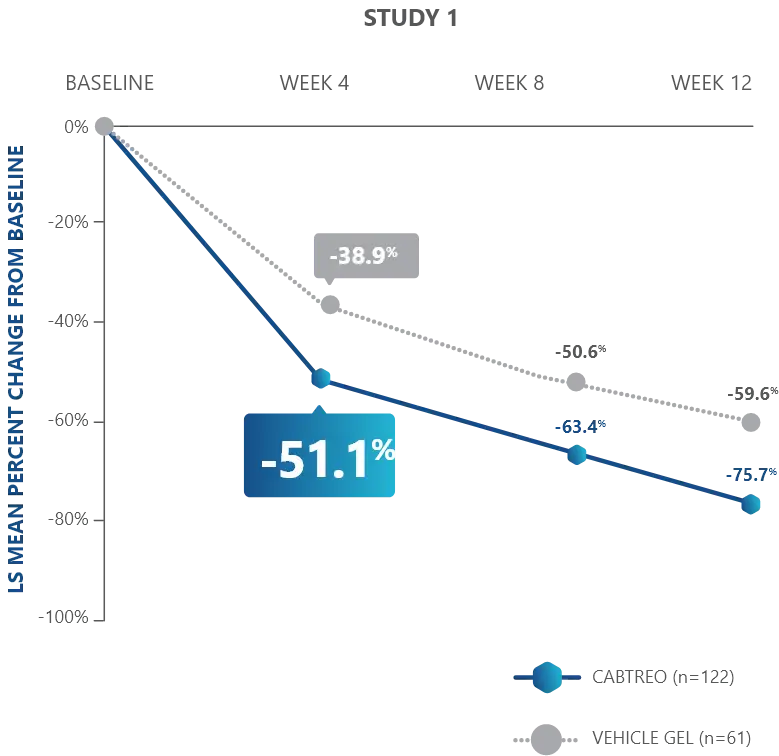
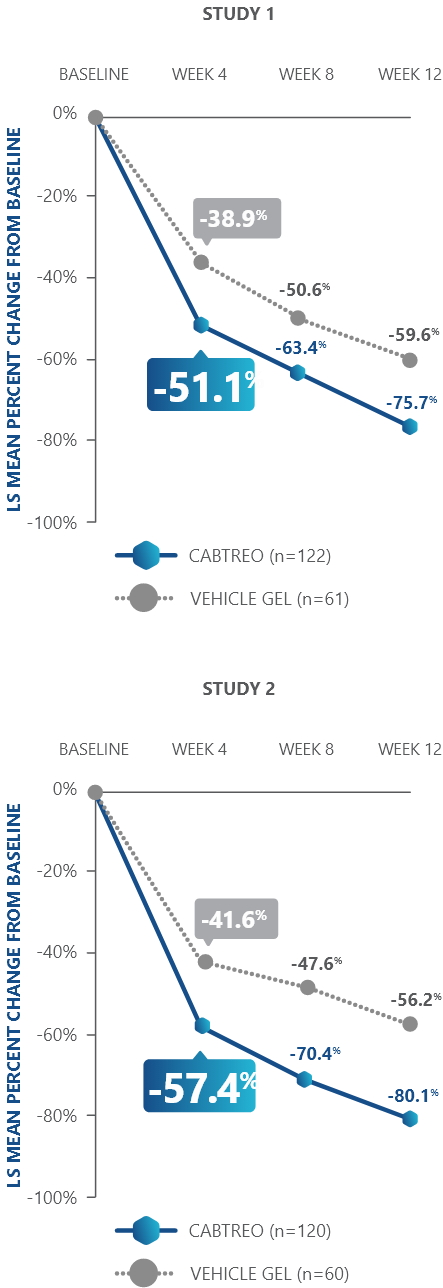
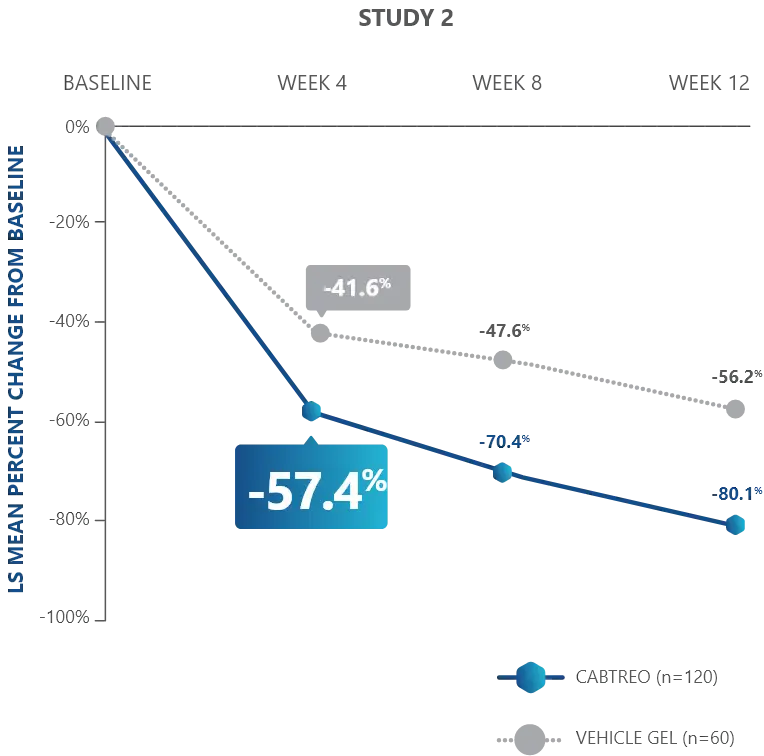
- The safety and efficacy of once-daily CABTREO were assessed in two multicenter, randomized, double-blind, vehicle-controlled, parallel group Phase 3 clinical trials of 363 subjects 10 years of age and older with facial acne vulgaris1,2
- Enrolled subjects had a score of moderate (3) or severe (4) on the Evaluator’s Global Severity Score (EGSS), 30 to 100 inflammatory lesions (papules, pustules, and nodules), 35 to 150 noninflammatory lesions (open and closed comedones) and two or fewer nodules1,2
- The coprimary efficacy endpoints of success on the EGSS, absolute change in noninflammatory lesion count, and absolute change in inflammatory lesion count were assessed at Week 121,2
- While subjects aged 10 to less than 12 years were included in these trials, CABTREO is not approved for use in patients less than 12 years of age1
- The safety and efficacy of once-daily CABTREO were assessed in two multicenter, randomized, double-blind, vehicle-controlled, parallel group Phase 3 clinical trials of 363 subjects 10 years of age and older with facial acne vulgaris1,2
- Enrolled subjects had a score of moderate (3) or severe (4) on the Evaluator’s Global Severity Score (EGSS), 30 to 100 inflammatory lesions (papules, pustules, and nodules), 35 to 150 noninflammatory lesions (open and closed comedones) and two or fewer nodules1,2
- The coprimary efficacy endpoints of success on the EGSS, absolute change in noninflammatory lesion count, and absolute change in inflammatory lesion count were assessed at Week 121,2
- While subjects aged 10 to less than 12 years were included in these trials, CABTREO is not approved for use in patients less than 12 years of age1

Reduction in noninflammatory lesions
- Two Phase 3 studies show a mean reduction in inflammatory lesions with CABTREO of 54% vs 40% with vehicle at Week 4.1
- Lesion reductions were greater with CABTREO vs vehicle gel as early as Week 4.1
- The safety and efficacy of CABTREO were evaluated in two multicenter, randomized, double-blind clinical trials.
MEAN PERCENT REDUCTION IN INFLAMMATORY LESIONS at week 121
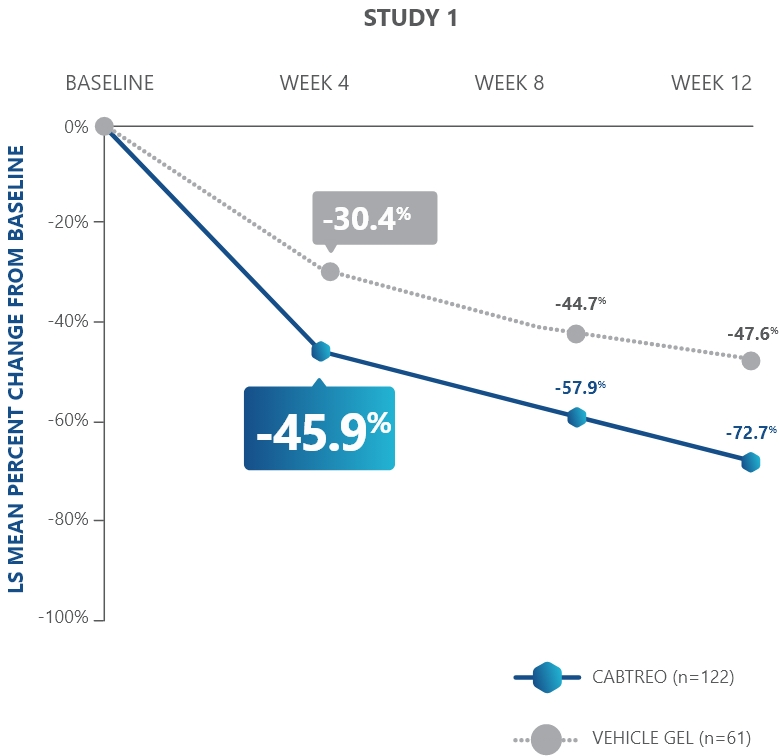
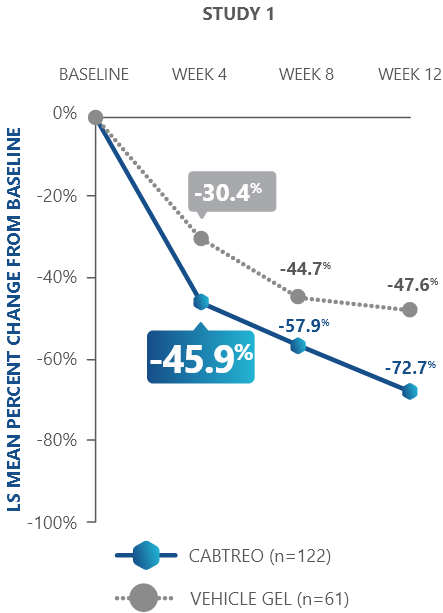
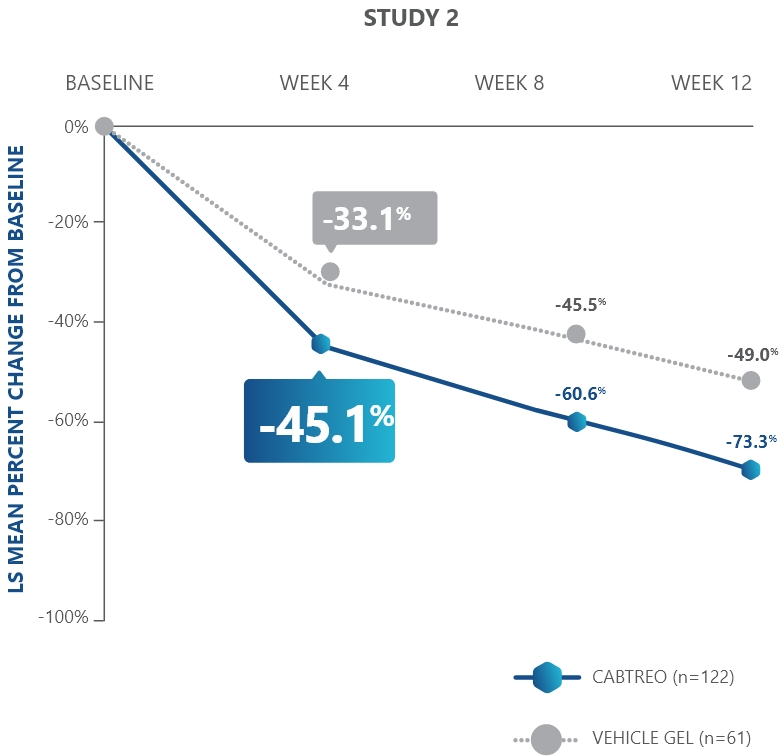
Demonstrated safety from first 4 weeks
Transient increases from baseline to Week 2 in scaling, erythema, itching, burning, and stinging were observed for CABTREO with scores beginning to normalize by Week 4.3
Adverse reactions recorded at Week 4 with CABTREO were mostly mild
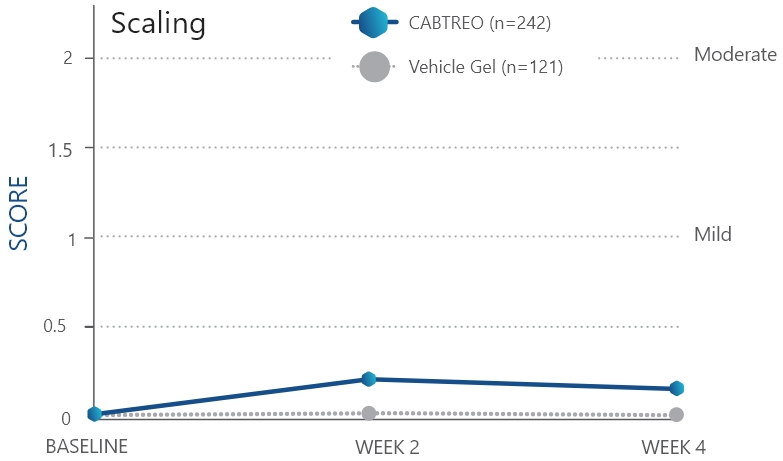
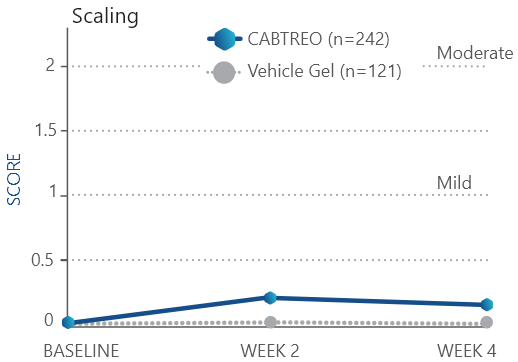
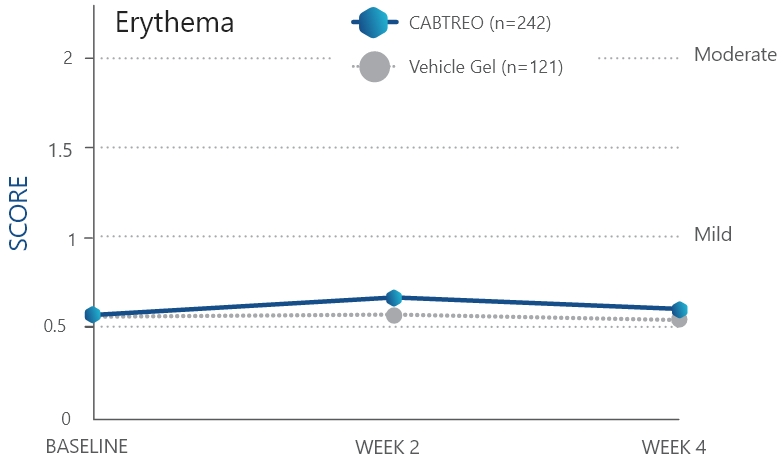
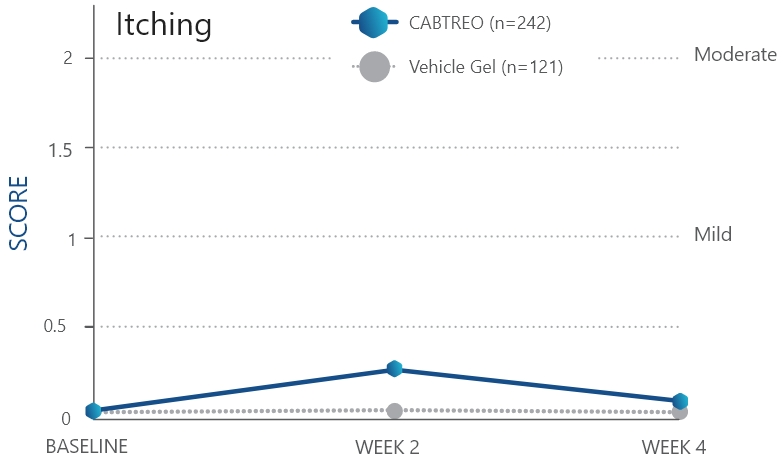
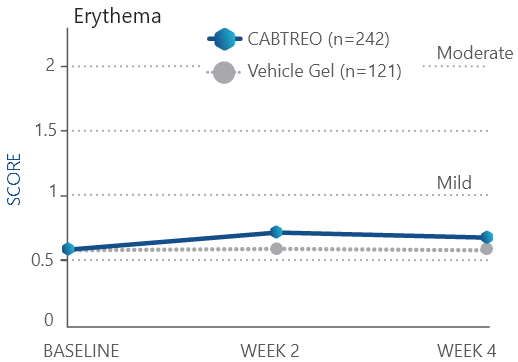
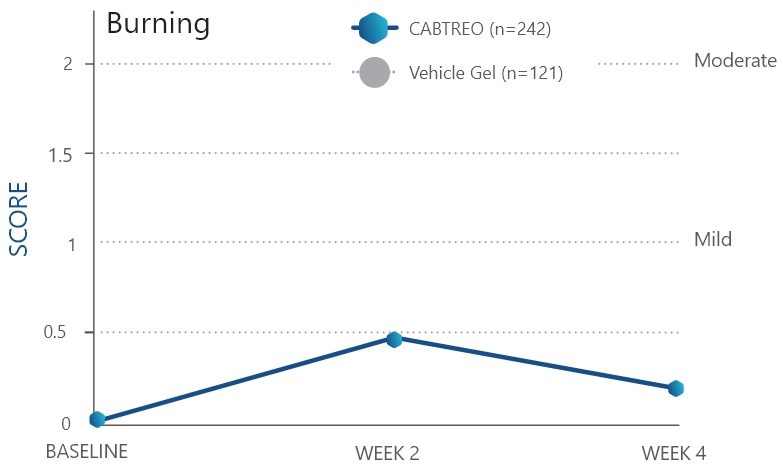
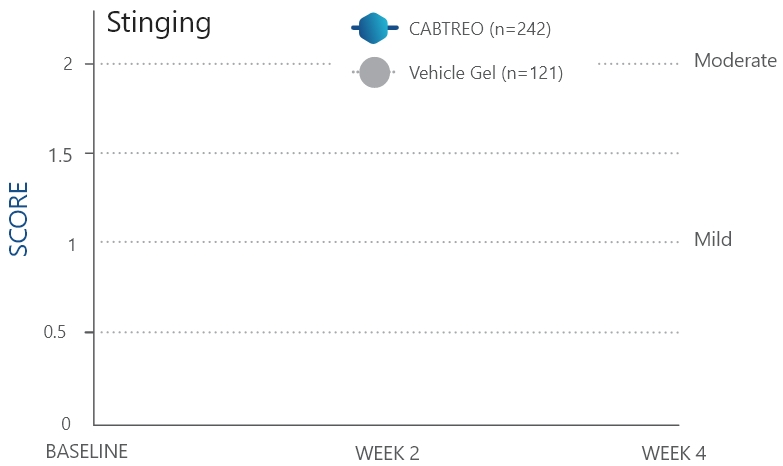
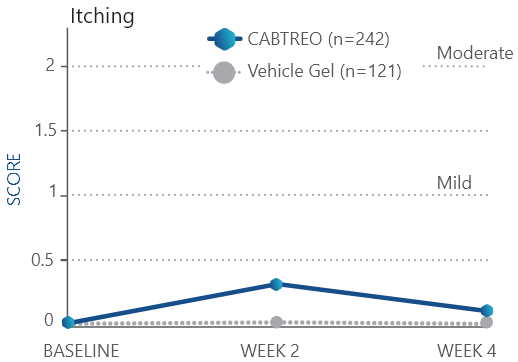
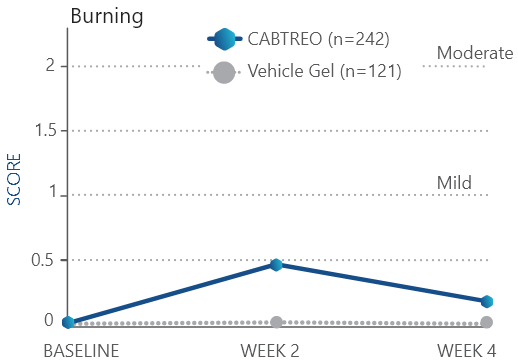
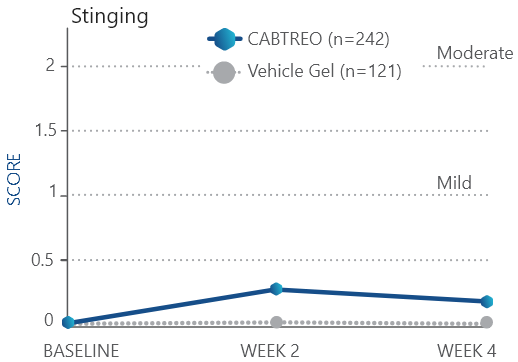
Cutaneous safety and tolerability assessments were graded on a 4-point scale (0=none; 1=mild; 2=moderate; 3=severe).
Investigator-assessed hyperpigmentation and hypopigmentation are not shown, as no trends in dyspigmentation were observed.
Important Safety Information AND INDICATION
CONTRAINDICATIONS
CABTREO is contraindicated in patients with:
- known hypersensitivity to clindamycin, adapalene, benzoyl peroxide, any components of the formulation, or lincomycin.
- history of regional enteritis, ulcerative colitis, or antibiotic-associated colitis.
References: 1. Stein Gold L, Baldwin H, Kircik LH, et al. Efficacy and safety of a fixed-dose clindamycin phosphate 1.2%, benzoyl peroxide 3.1%, and adapalene 0.15% gel for moderate-to-severe acne: a randomized phase II study of the first triple-combination drug. Amer J Clin Dermatol. 2022;23(1):93-104. 2. Ortho Dermatologics. Data on file. 3. CABTREO (clindamycin phosphate, adapalene and benzoyl peroxide) Topical Gel 1.2%/0.15%/3.1% [prescribing information]. Bridgewater, NJ. Bausch Health US, LLC.
